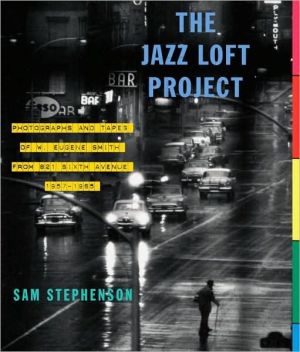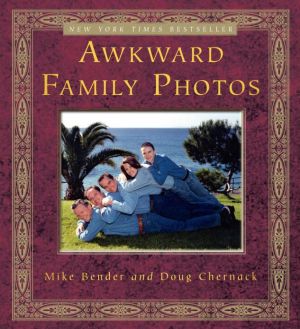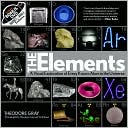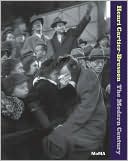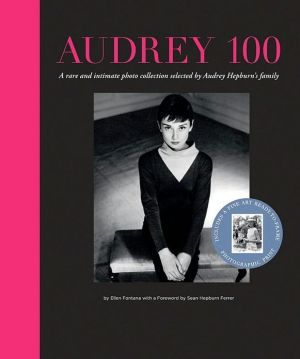The Jazz Loft Project: Photographs and Tapes of W. Eugene Smith from 821 Sixth Avenue, 1957-1965
In 1957, Eugene Smith, a thirty-eight-year-old magazine photographer, walked out of his comfortable settled world—his longtime well-paying job at Life and the home he shared with his wife and four children in Croton-on-Hudson, New York—to move into a dilapidated, five-story loft building at 821 Sixth Avenue (between Twenty-eighth and Twenty-ninth streets) in New York City’s wholesale flower district. Smith was trying to complete the most ambitious project of his life, a massive photo-essay on...
Search in google:
In 1957, Eugene Smith, a thirty-eight-year-old magazine photographer, walked out of his comfortable settled world—his longtime well-paying job at Life and the home he shared with his wife and four children in Croton-on-Hudson, New York—to move into a dilapidated, five-story loft building at 821 Sixth Avenue (between Twenty-eighth and Twenty-ninth streets) in New York City’s wholesale flower district. Smith was trying to complete the most ambitious project of his life, a massive photo-essay on the city of Pittsburgh.821 Sixth Avenue was a late-night haunt of musicians, including some of the biggest names in jazz—Charles Mingus, Zoot Sims, Bill Evans, and Thelonious Monk among them—and countless fascinating, underground characters. As his ambitions broke down for his quixotic Pittsburgh opus, Smith found solace in the chaotic, somnambulistic world of the loft and its artists. He turned his documentary impulses away from Pittsburgh and toward his offbeat new surroundings.From 1957 to 1965, Smith exposed 1,447 rolls of film at his loft, making roughly 40,000 pictures, the largest body of work in his career, photographing the nocturnal jazz scene as well as life on the streets of the flower district, as seen from his fourth-floor window. He wired the building like a surreptitious recording studio and made 1,740 reels (4,000 hours) of stereo and mono audiotapes, capturing more than 300 musicians, among them Roy Haynes, Sonny Rollins, Bill Evans, Roland Kirk, Alice Coltrane, Don Cherry, and Paul Bley. He recorded, as well, legends such as pianists Eddie Costa, and Sonny Clark, drummers Ronnie Free and Edgar Bateman,saxophonist Lin Halliday, bassist Henry Grimes, and multi-instrumentalist Eddie Listengart.Also dropping in on the nighttime scene were the likes of Doris Duke, Norman Mailer, Diane Arbus, Robert Frank, Henri Cartier-Bresson, and Salvador Dalí, as well as pimps, prostitutes, drug addicts, thieves, photography students, local cops, building inspectors, marijuana dealers, and others.Sam Stephenson discovered Smith’s jazz loft photographs and tapes eleven years ago and has spent the last seven years cataloging, archiving, selecting, and editing Smith’s materials for this book, as well as writing its introduction and the text interwoven throughout.W. Eugene Smith’s Jazz Loft Project has been legendary in the worlds of art, photography, and music for more than forty years, but until the publication of The Jazz Loft Project, no one had seen Smith’s extraordinary photographs or read any of the firsthand accounts of those who were there and lived to tell the tale(s) . . . The Barnes & Noble Review The photographs, transcribed conversations and belated memories collected in the remarkable The Jazz Loft Project: Photographs and Tapes of W. Eugene Smith from 821 Sixth Avenue, 1957-1965 can make you nostalgic for an era that you didn't live through and for a social milieu that you never were part of. Sequestering himself in a dingy loft in Manhattan's Flower District after a series of professional and personal setbacks, the famed photographer W. Eugene Smith began to scrupulously document both the street life around his home and, much more extensively, the comings and goings of a constant stream of jazz musicians who had an open invitation to participate in the all-night jam sessions that took place in his loft. A world-class obsessive, Smith wired the building -- which he shared with other musicians -- with recording devices in order to tape any spontaneous musical happenings that might occur. A partial listing in the back of the book documents the staggering roll call of visitors, including such luminaries as Thelonious Monk, Miles Davis, Ornette Coleman, and Bill Evans. Yet what the evocative Jazz Loft Project so vividly reminds us is that for every iconic figure now residing in the high culture pantheon, there were scores of lesser-known but staunchly creative artists who seeded the cultural field. Which brings us to tenor saxophonist Zoot Sims. The secret hero of the book, Sims keeps popping up again and again in pictures and personal anecdotes. (The estimable bop saxophonist Phil Woods recounts a priceless memory of Sims wiping out a room full of competing players: "THERE'S NOTHING BUT BODIES ALL AROUND HIM, AND HE'S STILL GOING!") Still, this legendary improviser remains a "musician's musician." Think of Richard Yates as a literary equivalent -- only subtract the posthumous fame. Sims, who died in 1985 at age 59, may have been out of step with the postwar times; while he could fit in effortlessly with bop-inclined partners, his true role models were earlier Swing-era giants like Lester Young and Ben Webster. Still, few jazz instrumentalists ever swung harder while spinning out gorgeous lyrical improvisations in the most luxurious of tones. By the time of such late-period album masterpieces as "If I'm Lucky," "Warm Tenor," and "In a Sentimental Mood," Sims had achieved a state of golden artistic maturity that is a joy to experience. Smith, much like the jazzmen he virtually lived with, appreciated this invaluable underdog. Check out the glowing shot on page 79 of Sims communing with his horn; it's a picture that speaks equally of the photographer's mastery and the saxophonist's passion. --Steve Futterman
821 Sixth Avenue\ See, actually I’m doing a book about this building itself . . . out the window and within the building, because it’s quite a weird, interesting story.\ \ —W. Eugene Smith,\ recorded on his loft tapes, ca. 1960\ Eight twenty-one Sixth Avenue, a nondescript five-floor loft walkup, was built in 1853 for commercial purposes by someone named George E. Hencken. Today, the narrow building is slightly wider than the length of the parking space in front of it. Its bricks are painted gray and layered with decades of accumulated scum and grime. High-rise condo towers, which have sprouted since the neighborhood was rezoned residential in the late 1990s, loom over the building. In a matter of time 821 Sixth Avenue will be sold and demolished to make way for more condos. Meanwhile, the Chinese-American owners, the Chang family, import and sell wigs there, very successfully. They bought the building in 2002 from Bernie’s Discount Center, which sold televisions, microwave ovens, air conditioners, and other appliances in the space for four decades. It is an unprepossessing place, bearing no clues of the crossroads of jazz, art, and postwar urban- American lore that it used to be. The Chang family never heard about it.\ For ten years, beginning in 1954, jazz musicians by the hundreds climbed the creaky, mildewed wooden stairs for sessions—both impromptu and formal—in the middle of the night. Many of the biggest names in jazz hung their hats there, for at least a few hours, if not for several years.\ Thelonious Monk and Hall Overton rehearsed the music for Monk’s legendary big-band concerts at Town Hall in 1959, at Lincoln Center in 1963, and at Carnegie Hall in 1964. Miles Davis, Charles Mingus, and Teddy Charles honed the sound heard on the record Blue Moods there. The place drew such prime players as Bill Evans, Roland Kirk, Zoot Sims, Jimmy Giuffre, Roy Haynes, Sonny Clark, Stan Getz, Jim Hall, Don Cherry, and Paul Bley, who formed ad hoc ensembles that often included veteran stars like Buck Clayton, Vic Dickenson, and Pee Wee Russell. Ornette Coleman went there to play the beat-up, idiosyncratic Steinway B piano on the fifth floor by himself. Alice Coltrane and Joe Henderson rented rooms on the fifth floor for a few months after moving to New York from Detroit in 1961.\ Musicians from other genres frequented the place, too: minimalist composer Steve Reich, conductor Dennis Russell Davies, and folksinger Nehama Hendel. Photographers Diane Arbus, Robert Frank, and Henri Cartier-Bresson went there, as did painter Salvador Dalí and writers Anaïs Nin and Norman Mailer.\ For every renowned musician who visited 821 Sixth Avenue, however, there were dozens who were obscure. Strangers—unproven newcomers— wandered into the place: if you could play an instrument, you were okay. Fifteen-year-old pianist Jane Getz came in from Texas, pianist Dave Frishberg from Minnesota, and bassist Jimmy Stevenson from Michigan. But this was no romantic oasis of “cool” acceptance and warm fellow feeling. If you couldn’t play—if you weren’t good enough— there was no reason for you to be there, unless you had other assets. There was dope to be smoked, and sometimes heroin or methadrene to shoot up, and every once in a while there was sex to be had. The door facing the sidewalk could be unlocked or completely missing—a cave or mine shaft in the dead center of Manhattan—and junkies snuck in, climbed the stairs, and stole things to pawn. Roaches and mice and rats and stray cats loved the place, too.\ During the daytime the smell of flowers wafted through the neighborhood and the open windows of the loft building. Growers from Long Island had begun ferrying and carting their flowers to the intersection of Sixth Avenue and Twenty-eighth Street sometime around the Civil War. Before refrigeration, perishable merchandise required a central distribution point, and this corner was perfect for burgeoning Manhattan. The same location was also good for vice. The flower shops closed down late in the afternoon, and the Sixth Avenue elevated train canopied the street. Before World War I the neighborhood was known as “the Tenderloin,” the primary red-light district in New York. The notorious dance hall the Haymarket was at Sixth Avenue and Thirtieth Street, and the upper floors of many of the flower shops turned into brothels or gambling joints after dark. The artist John Sloan documented the seedy scene with numerous paintings and drawings.\ Sex, gambling, and flowers—fleeting pleasures; it made sense for them to find a home here. A few decades later, the real estate cheapened by its legacy and made affordable for artists, the flower district was the place to hear some of the best after-hours jazz in New York City. The unorthodox rhythms of the music meshed with the daily patterns on the street. At dawn the flower growers would arrive to peddle their blooms in the neighborhood markets as musicians were stumbling out of the building. Then, after midnight, with the shops closed and quiet again, the jazzmen (and a few women) resurfaced for a night of full-tilt blowing.\ W. Eugene Smith moved into the building in 1957, during a period in his life that he later called “the worst”—a relative term, given his always stormy affairs. The scene anchored and inspired him. It was an intersection of people that could have occurred nowhere other than New York. Jazz musicians were flocking there from all over the country, along with many others aspiring to new lives. Suddenly this building, which had been abandoned for decades, became a spot where you could stop by and see an icon, or see unknown junkies strung out on the fourth-floor landing, or see nobody at all, only empty Rheingold bottles, hundreds of cigarette butts, and tin cans of half- eaten food. Some nights, from the sidewalk, you’d hear transporting saxophone solos coming out of the fourth- or fifth-floor windows. Other nights, the only sound would be the periodic throttle of the Sixth Avenue bus, which had a stop at the corner of Twenty-eighth Street.\ Somewhere floating on the premises, or peering out his fourth-floor window, the furtive Smith and his camera clicked away. In a November 1958 letter to his friend Ansel Adams, Smith wrote: “The loft is a curious place, pinned with the notes and proof prints . . . with reminders . . . with demands. Always there is the window. It forever seduces me away from my work in this cold water flat. I breathe and smile and quicken and languish in appreciation of it, the proscenium arch with me on the third stage looking it down and up and bent along the sides and the whole audience in performance down before me, an ever changing pandemonium of delicate details and habitual rhythms.”\ The last phrase well describes the loft music, too, which Smith recorded from his fourth-floor darkroom. He had wires reaching like roots through walls and floors to microphones all over the place. He once called the story of the loft scene a “unique piece of Americana.” From his photos and tapes and from interviews with participants, we can document 597 people (as of this writing) who passed through the dank stairwell of this building in the 1950s and 1960s. The true number could be twice as high. From all walks of life all over the map, only a dozen or so of these people went to college. What building in twenty-first-century America—that is not an enterprise or institution—has this kind of diverse traffic? Is there one? Anywhere?\ A Congenial Haunt—\ Word Gets Around\ After the Sixth Avenue elevated train tracks were razed in 1939, Lewis Mumford wrote in The New Yorker, “The dreary mess of buildings that loitered beside the old ‘L’—much of it dating back to the 1870s— has long been ready for demolition.” In 1954, when David X. Young, a twenty-three-year-old artist from Boston, first saw 821 Sixth Avenue, it still was a dreary mess. Young needed a large, low- rent place in which to paint. Through his friend Henry Rothman, an artist who ran a frame shop on Twenty-eighth Street between Broadway and Sixth Avenue, Young found a space in 821 Sixth Avenue along with musicians Hall Overton and Dick Cary. They each paid forty dollars per month to landlord Al Esformes, who had a check-cashing business across the street. Young took the fifth floor, Overton the fourth, and Cary the third. Soon, photographer Harold Feinstein and his wife, pianist Dorrie Glenn, took over half of Overton’s space on the fourth floor.\ “The place was desolate, really awful,” said Young, who later lived in a loft on Manhattan’s Canal Street for four decades before dying in 2001. “The buildings on both sides were vacant. There were mice, rats, and cockroaches all over the place. You had to keep cats around to help fend them off. Conditions were beyond miserable. No plumbing, no heat, no toilet, no electricity, no nothing. My grandfather loaned me three hundred dollars and showed me how to wire and pipe the place.”\ As a teenager, Young developed a passion for jazz. He was a regular at Boston jazz clubs like the Savoy and the Hi Hat, and he made friends with many musicians. The improvisational energy of jazz inspired his abstract expressionist paintings. When he moved to New York, Young helped to pay his bills by designing jazz album covers for Prestige Records. He did covers for Jimmy Raney, the Modern Jazz Quartet, Miles Davis, Sonny Rollins, Teddy Charles, and Art Farmer. Privy to many recording sessions, Young found himself hanging out with musicians.\ “One of the problems they always had,” Young said of the musicians, “was finding places to rehearse where they wouldn’t bother anybody with noise. I went with Bob Brookmeyer and Jimmy Raney to some of their practice sessions at Nola’s studio, where everybody would chip in fifty cents or something for a room. But that wasn’t good. A lot of them didn’t have any money, and there’d be a time limit on the rental. So I thought about my loft. I realized I had the ideal space for these sessions. I checked around and found a good piano for fifty dollars, delivered. Some movers, huge guys, brought the piano over to my loft, hoisted it with ropes up this side of the building, and brought it in through my front window. I got Billy Rubenstein to come over and tune it, and we were in business.”\ Cary also brought a Steinway B piano into his third-floor loft, and Overton moved two upright pianos into the fourth floor. Cary and Overton were both married, with permanent residences in the city. They rented their loft spaces for practice sessions, but they frequently stayed overnight. Cary worked as a pianist, arranger, and horn player in Dixieland- and New Orleans–style bands, including a few with Louis Armstrong. In Young’s mind, he was the ideal tenant. “Cary couldn’t have cared less about the terrible conditions,” Young said. “His way of dealing with the mice and cockroaches was to set up little plates of food in the corners. He said if you fed them they wouldn’t bother your real food.”\ Overton was a dashing, six-foot-four suit-and-tie man who at first glance seemed out of place in the squalor of 821 Sixth Avenue. After carrying stretchers in combat in France and Belgium in World War II, he taught classical composition at Juilliard and, later, at Yale and the New School for Social Research. His wife, Nancy Swain Overton, was a successful singer, first in a group called the Heathertones and later in the iconic Chordettes, of “Mister Sandman” fame, and they shared a nice house in Forest Hills, Queens, with their two young sons. Overton was revered and beloved as an innovative teacher and arranger. He had a knack for finding and nurturing the unique qualities inside all of his students, rather than imprinting his methods on everyone. He worked with Charles Mingus, Oscar Pettiford, Teddy Charles, and Stan Getz, and forged a long-standing relationship with Thelonious Monk based on deep mutual respect—not an easy task. Minimalist groundbreaker Steve Reich studied with Overton in the loft once a week for two years in the late 1950s, an experience Reich calls pivotal to his career. From Monk to Reich, the sweep of Overton’s behind-the-scenes influence may be unsurpassed in American music history. But he seemed to care nothing about acknowledgment. He preferred the obscurity of his studio loft to the hallowed halls of Juilliard.\ At night and on weekends, Overton gave lessons to a range of folks such as the billionaire tobacco heiress Doris Duke, Marian McPartland, seminal conductor Dennis Russell Davies, and composer Carman Moore. Jazz legends would stop by without an appointment and pick Overton’s brain and soul, friendship and camaraderie the medium of exchange. His substantial yet unassuming presence at 821 Sixth Avenue was critical to the scene.\ Word spread in the jazz underground that 821 Sixth Avenue was a congenial haunt.\ “We were always looking for spacious places to play late at night,” the bassist Bill Crow says, “especially places with tuned pianos. This place was perfect.”\ The location in the center of Manhattan made it easy for people to drop by on their way to and from somewhere else. It drew both established stars and young players eager to prove themselves on one or another of the upper three floors. “Charlie Mingus and I started going [to the loft] a lot in 1954 and 1955,” Teddy Charles says. “We had some wild, free sessions over there: Art Blakey, Miles Davis, Art Farmer, Gigi Gryce, Mal Waldron, Jimmy Knepper, Oscar Pettiford, and dozens of other guys. I remember Bill Evans coming into the loft sometime around 1955 or ’56. He looked like a school kid. But within a few months or a year he’d taken the whole city by storm. Nobody knew who the hell he was when he first came in there.” Pianists Paul Bley and Freddie Redd remember seeing Charlie Parker in the loft sometime before he died in March 1955.\ The saxophonist Leroy “Sam” Parkins remembers New Year’s Eve in 1959, when he was playing with the drummer Louis Hayes, the bassist Doug Watkins, the saxophonist Zoot Sims, the guitarist Jimmy Raney, and the pianist Sonny Clark. “We were playing and having a good time,” Parkins says. “Then the door flew open and Lee Morgan, Pepper Adams, and Yusef Lateef walked in. The whole scene changed immediately, and the music reached an unreal level. The sessions didn’t gel every night, but this time the damn place nearly exploded.”\ Bill Takas was one of the regular bass players; he and Sonny Clark and the drummer Ronnie Free made up the rhythm section for many sessions. “Because basses, pianos, and drums are so much harder to move, any place with a rhythm section would attract horn players from all over town,” Takas says. “We’d put the word out and you never knew how many would show up—two, three, or twenty-five horn players. The masters might be there, or cats you’d never seen before.”n
\ Publishers WeeklyAfter having a breakdown in the midst of working on a photo-essay on Pittsburgh in 1957, legendary photographer W. Eugene Smith holed up in a loft in New York's Chelsea, in the Tin Pan Alley area. There, over the next several years, he became deeply embroiled in the New York City jazz scene, opening his home as a practice and performance space for some of the great artists of mid-century jazz, including Thelonious Monk, Zoot Sims and many others. Of course, he took pictures—both of musicians and of a window-size view of mid-century New York—and also wired the place for recording, logging hours and hours of tape, capturing the music and the talk around it. These photos and tapes had been thought lost—the stuff of rumor, buried in Smith's archive—until Stephenson dug them out and culled the best, along with transcriptions of material from the tapes, for this landmark book. Smith's stunning use of contrast makes figures like Monk seem dramatic and completely ordinary at the same time. The photos of the city offer a rare glimpse into a neighborhood being itself when it thought no one was watching. This will be an essential book for jazz fans, photography lovers and those interested in the history of New York. (Nov.)\ \ \ The Barnes & Noble ReviewThe photographs, transcribed conversations and belated memories collected in the remarkable The Jazz Loft Project: Photographs and Tapes of W. Eugene Smith from 821 Sixth Avenue, 1957-1965 can make you nostalgic for an era that you didn't live through and for a social milieu that you never were part of. Sequestering himself in a dingy loft in Manhattan's Flower District after a series of professional and personal setbacks, the famed photographer W. Eugene Smith began to scrupulously document both the street life around his home and, much more extensively, the comings and goings of a constant stream of jazz musicians who had an open invitation to participate in the all-night jam sessions that took place in his loft. A world-class obsessive, Smith wired the building -- which he shared with other musicians -- with recording devices in order to tape any spontaneous musical happenings that might occur. A partial listing in the back of the book documents the staggering roll call of visitors, including such luminaries as Thelonious Monk, Miles Davis, Ornette Coleman, and Bill Evans. \ Yet what the evocative Jazz Loft Project so vividly reminds us is that for every iconic figure now residing in the high culture pantheon, there were scores of lesser-known but staunchly creative artists who seeded the cultural field. Which brings us to tenor saxophonist Zoot Sims. The secret hero of the book, Sims keeps popping up again and again in pictures and personal anecdotes. (The estimable bop saxophonist Phil Woods recounts a priceless memory of Sims wiping out a room full of competing players: "THERE'S NOTHING BUT BODIES ALL AROUND HIM, AND HE'S STILL GOING!") Still, this legendary improviser remains a "musician's musician." Think of Richard Yates as a literary equivalent -- only subtract the posthumous fame. Sims, who died in 1985 at age 59, may have been out of step with the postwar times; while he could fit in effortlessly with bop-inclined partners, his true role models were earlier Swing-era giants like Lester Young and Ben Webster. Still, few jazz instrumentalists ever swung harder while spinning out gorgeous lyrical improvisations in the most luxurious of tones. By the time of such late-period album masterpieces as "If I'm Lucky," "Warm Tenor," and "In a Sentimental Mood," Sims had achieved a state of golden artistic maturity that is a joy to experience.\ Smith, much like the jazzmen he virtually lived with, appreciated this invaluable underdog. Check out the glowing shot on page 79 of Sims communing with his horn; it's a picture that speaks equally of the photographer's mastery and the saxophonist's passion. --Steve Futterman\ \ \
